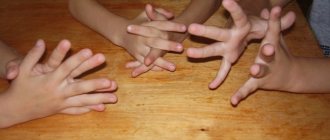When a pediatrician asks to bring a urine test for a baby, many mothers panic: how to persuade a little baby to pee, is it worth forcing him to wake up if he often urinates only in his sleep? Most mothers know about special devices that simplify this moment, but even with this, frequent questions arise: how to make a child pee if he cannot control this process.
Containers and tubes for urine collection
Why take a urine test?
A general urine test performs a kind of audit of the work of many internal organs. Urine helps to identify:
- How the kidneys work;
- Does the baby have diabetes? Your glucose level will tell you this;
- Are there any liver problems? If the color of urine is too dark, it means that there are malfunctions in the functioning of the organ;
- Presence of urinary tract infections. In the early stages they may not be found, but diagnostics where elevated white blood cells are present indicates a problem.
Important! A urine test also shows whether there are any questions in the activity of the heart, whether inflammatory processes have begun somewhere in the body.
All about urine indicators
Before drawing conclusions about the state of the urinary system, you should know the normal indicators of OAM in infants.
How to understand that the mixture is not suitable for a baby
Norm of TAM indicators in newborns
| Index | Norm |
| Color and transparency | Light yellow, transparent |
| Specific gravity | 1000-1005 |
| Acidity (Ph) | 4,4-7,3 |
| Glucose, nitrates, ketones, salts, mucus, bacteria | Not detected |
| Leukocytes | In newborns - no more than 3, maximum 6 in the field of view |
| Red blood cells | Not detected or no more than 2 in the field of view |
| Protein, bilirubin | Normally absent |
From this table it follows that:
- Urine should be clear in color and not have a putrid odor, the smell of ammonia and acetone;
- The color may be light or dark yellow, depending on the frequency of urination and consumption of certain foods;
Important! Carrot and beet juices color urine. Taking medications also affects the color of urine.
- Density of biomaterial up to two years – 1002-1004;
- The reaction is slightly acidic, 4.5-8 Рh;
- The protein is not detected normally, but its concentration may be low (up to 0.036 g/l);
- Leukocytes - no more than 6 in the field of view, erythrocytes - no more than 2;
- Mucus, salts and bacteria should be absent.
How to make a child pee?
What tricks do parents resort to to collect urine! How many different tricks have been invented to help adults! Let's look at some of them:
- Putting a urinal on your baby, stimulate urination with the sound of pouring water (pour water from glass to glass, turn on an audio recording with the sounds of a stream or rain).
- Apply a warm diaper to the bottom of his tummy or use a warm hand to massage his belly under his belly button.
- Give your baby a warm drink.
- Breastfeed your baby (babies often start peeing during breastfeeding).
- Place your baby's hand in warm water.
- Warm your feet with warm hands or breath.
- Place the baby on a wet diaper.
An infant may pee immediately after removing the diaper - be prepared for this, do not miss the moment.
Complete blood count: normal blood counts in children
Newborn baby. Tips and tricks
What powder should I use to wash my newborn's clothes?
Rules for collecting tests from infants
How to make a baby pee? As a rule, it is enough just to give the baby something to drink or feed, and the analysis will be successful. The sound of water helps many babies, so the baby immediately begins to write. To collect urine for a reliable result, you must adhere to certain rules.
Required dose
Which doctors should a child see at 6 months?
For the analysis to be successful, it is not so much the quantity of urine collected that is important, but its quality. For a general analysis of an infant, as a rule, 40 ml of urine is taken, but 10-20 ml will be sufficient.
Note! In jars and on urine bags purchased at pharmacies, there is usually a scale indicating the required amount of urine for analysis.
Amount of urine for analysis
When to collect urine
Urine collection is carried out only in the morning. You cannot prepare a jar of urine in advance, in the evening, much less store it in the refrigerator until the morning.
Storage and transportation rules
Once the urine is collected, it should be taken to the clinic. It should be stored for no more than two hours, otherwise the urine will become cloudy. It should be transported in a jar and stored in a warm place.
How to collect urine from a girl
A girl’s genitals are not “visible” like a boy’s, so there may be some difficulties with the analysis.
There are some proven methods:
- A saucer that is placed under the baby's bottom. When she relieves herself, you should slightly raise the girl’s legs and remove the saucer.
- Using a universal urine bag. It will suit a boy too. Sold in every pharmacy, inexpensive. It is enough to peel off the protective layer and stick it to the baby’s genitals. You can’t put on diapers, but wait patiently for as long as necessary. If you put on a diaper, it will squeeze the urinal, or the latter will simply fly off when the baby actively moves her legs.
Universal urinal
How to collect urine from a boy
Types of urine collectors
It is somewhat easier to collect urine from a boy than from a girl.
There are two ways:
- Using a jar. Before the analysis, the baby is bathed, wiped dry and placed on a diaper. Then they wait for the right moment with a previously prepared jar.
- Using a urine bag.
Using jars and urine bags
At home, mothers most often use urinals, since this is the fastest option for testing. There is also an option to use a regular plastic bag. It is important that it is new and clean, otherwise there is a risk of getting a poor-quality result. It is cut on the sides, placed between the child's legs and tied at the waist. It turns out to be a kind of diaper. As soon as the baby has urinated, the bag is removed and its contents are poured into a jar.
How to use a urine bag correctly
Preparing for a urine test in children
Urine is a biological fluid through which metabolic products are excreted from the body. It removes excess fluid, toxins, ions, excess hormones, vitamins and many other substances.
Urinalysis is one of the most common diagnostic methods.
What are its advantages:
- it helps to collect information about the state of many organs and systems;
- correlates with another important study - a blood test;
- does not require complex equipment and special measures to collect material;
- very often, without additional research, it helps to identify the presence of certain diseases.
Proper preparation for this test is very important to obtain the correct result.
First of all, it is necessary to wash the baby without using soap, since particles of the baby’s epithelium and traces of cosmetics can spoil the analysis. Herbal infusions, potassium permanganate, and other antiseptics are also not suitable for this procedure. Plain water will be enough.
The quality of urine is greatly influenced by external factors such as stress or medication.
After all, many medications, as well as herbal remedies and vitamins, are excreted by the kidneys, and their intake will affect the test results.
Therefore, if a child is taking any medications, it is necessary to notify the doctor who writes the referral for testing.
And, if possible, stop taking them before going to the laboratory. On the eve of the test, you need to exclude brightly colored fruits and vegetables from your diet: citrus fruits, carrots, beets, blueberries. They may change the color of your urine. Mineral water can also greatly affect the quality of biomaterial; its use should also be temporarily limited. Also these days it is necessary to protect the baby from various shocks - both positive and negative.
You also need to take a responsible approach to choosing a container for urine. It must be made of transparent plastic or glass (this is necessary to assess the color of the contents). It is also important that the container is clean. The most convenient way is to buy a special plastic measuring container at the pharmacy. If parents choose the most common option - a glass baby food jar - it should be thoroughly washed and dried. It is better not to use a towel, as it will leave traces of fibers on the vessel.
Not all young mothers and fathers know about the existence of special sterile urinals for very young children. But this is an indispensable assistant for parents of babies who do not yet understand the importance of laboratory diagnostics. This is a transparent bag with a valve and an adhesive strip, which you just need to attach between the baby’s legs and wait a while.
If for some reason you don’t have a urine bag at hand, you can resort to methods invented many years ago.
For example, use a shallow saucer. It must be boiled, warmed, dried and the child planted or placed on it.
After urinating, pour the contents of the saucer into a container. This method is suitable for children of both sexes.
You can also use a small, clean plastic bag. The handles on it should be cut and tied around the legs so that the urine gets into the bag.
Then the urine from it can be poured into a jar. Before this, the child should be in an upright position. Children who cannot stand can be held upright. It is enough to simply place the smallest ones without a diaper on a bag, under which it is advisable to place oilcloth, since there is a high probability of urine spilling.
The rating of the most ridiculous ways to collect urine is topped by squeezing a wet diaper or diaper. Urine is filtered through the cloth or gel contained in the diaper and changes its properties greatly.
Pouring the contents of the pot into a clean container is also a bad idea. Plastic pots cannot be boiled, which means the analysis will show a high level of microorganisms and leukocytes. But you can try placing a clean container inside the pot.
The frequency of urination in a newborn is about 25 times a day, in a child of six months - approximately 15 times, after three years - about 6-8 times a day.
Mom's tricks
Is bright yellow urine in a child under one year old normal or abnormal?
How to get a child to pee for tests, there are some tricks for quickly collecting urine. Some of them can be used not only for infants in the first months of life, but also for babies who are one or two years old and are already using the potty.
What to do to help your newborn urinate:
- Pour liquid from container to container or turn on tap water in the bathroom where you take the baby. Typically, the sound of water makes the baby pee, causing the urge to urinate.
- A newborn can be placed on a damp diaper, but not for long and only in a warm room.
- Some babies may whine as soon as they start stroking their lower belly.
- When the baby has eaten milk or drunk some water, he may also begin to urinate. Therefore, the mother can offer the baby a drink before collecting urine.
One of the tricks is to give the baby some water.
- If you put your baby's hand in a container of warm water, he can also pee.
What device should be used to collect urine from a child?
Naturally, urine should be collected in some sterile container. The following containers are suitable:
- special medical urinal;
- plastic container or glass jar;
- new plastic bag.
Whatever container you choose, it is important that it is clean or sterile. So, if this is a medical container or urinal, they must be new and opened only before collecting the analysis. If it is a glass jar, then it must first be boiled. And if you use a package, it must be new, never used.
What not to do when collecting urine
You should not resort to the following activities:
- Trying to extract urine from a diaper or diaper;
- Store urine for more than two hours. In this case there will be no reliable result.
- It is not recommended to use a pot, since with frequent use, traces of biological substances form on the walls.
The older the baby gets, the more difficult it is to get him to be patient enough to collect urine for analysis. The best option for this is always a urinal, which greatly simplifies the process and saves time.
How to collect biomaterial from a baby using a plastic bag?
There is no limit to the ingenuity and resourcefulness of parents - it turns out that collecting urine for analysis can be done with an ordinary plastic bag: cheap, accessible, and effective. You need to take a “T-shirt” bag - with handles that are cut for convenient fixation of the bag on the child’s legs. The sides of the bag need to be cut slightly so that its shape vaguely resembles a diaper. This simple design is attached to the baby, after which they wait for the “miracle” to happen.
It is important that the baby remains in a horizontal position all this time. When the urine is collected in a bag, it must be poured into a sterile container and sent for analysis to the clinic.











